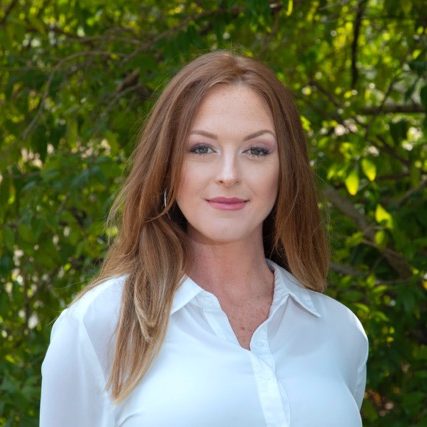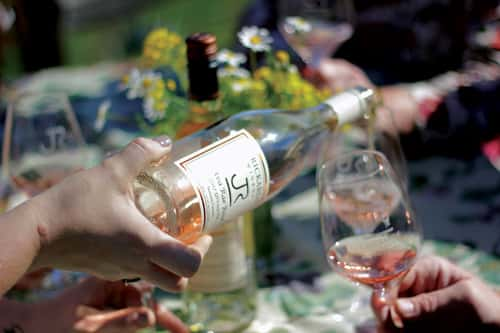
J. Rickards Winery
24505 Chianti Rd.
Cloverdale, Calif. 95425
(707) 758-3441
www.jrwinery.com
Hours: 11 a.m. to 4 p.m. (Monday-Saturday)
Tasting Fees: $15 per person; fee waived with wine purchase or wine club signup in groups of eight or fewer.
Wines Offered: A rotating menu of handcrafted, small-lot wines with up to 24 different wines made annually, including Zinfandels, Cabernet Sauvignon, Petit Sirah, Sauvignon Blanc and more.
Reservations: For groups of nine or more, a reservation and advance tasting fee payment of $15 per person is required.
Picnics: Yes. Bring your own or order 48 hours in advance with winery. Menu options available on website.
Pets: Well-behaved dogs on leashes are welcome.
Did You Know? The wine cave at J. Rickards is comprised of 42 individual sections of precast 12-inch thick reinforced concrete. The sections average 22 tons each. Earth moving and foundation pre work for the cave took more than three months, but the structure itself was constructed in just three days, as each section was lifted into place by the largest self-propelled crane in California. The cave extends into Chianti Mountain and is 18 feet underground at its deepest point.
[Photos courtesy of J. Rickards Winery]
Jim Rickards is not your average grape grower. He takes chances, regularly tests new grape varietals in “the cradle” (his experimental plot), and works as a registered nurse in the intensive care unit at Santa Rosa Memorial Hospital when he’s not in the vineyards. His boutique winery, J. Rickards, is nothing short of a success, with award-winning wines and a loyal fan base enjoying what Rickards calls, “Darn Fine Barn Wine.”
 Born and raised in San Francisco, Rickards was a city kid who always had the farming gene, he says. In the late 1960s, he joined the Navy, deployed to Vietnam with the U.S. Marine Corps and eventually left the service where he did three things: grew his hair, grew a mustache and got out of dodge. He later entered the cattle business in Petaluma. “If you had two shiny nickels to rub together, you could buy cows,” he says. In 1976, he bought the 60-acre-property near Cloverdale where his winery and vineyards sit, with original vines from 1908 not producing. “Grapes were the only thing that would grow out here in the late 1800s,” he says. It was considered a “crappy place to grow vines” back then, so it was affordable. And while he couldn’t afford to buy nursery vine-stocks, he learned to graft, splicing the top of one vine onto the roots of another. He lived in tents with his three children, ages 2, 4 and 6 at the time, while he built their house, which sits just a stone’s throw from the tasting room.
Born and raised in San Francisco, Rickards was a city kid who always had the farming gene, he says. In the late 1960s, he joined the Navy, deployed to Vietnam with the U.S. Marine Corps and eventually left the service where he did three things: grew his hair, grew a mustache and got out of dodge. He later entered the cattle business in Petaluma. “If you had two shiny nickels to rub together, you could buy cows,” he says. In 1976, he bought the 60-acre-property near Cloverdale where his winery and vineyards sit, with original vines from 1908 not producing. “Grapes were the only thing that would grow out here in the late 1800s,” he says. It was considered a “crappy place to grow vines” back then, so it was affordable. And while he couldn’t afford to buy nursery vine-stocks, he learned to graft, splicing the top of one vine onto the roots of another. He lived in tents with his three children, ages 2, 4 and 6 at the time, while he built their house, which sits just a stone’s throw from the tasting room.
In 1991, Rickards decided to make wine with the Cabernet grapes he’d been growing. The outcome? “It was marvelous,” he says gleefully. “I grow whatever I want to grow,” he says, and uses three steps to decide on his varietals: “First, see what everyone else around is planting, second make a $100,000-an-acre gamble, and last, plant a test block with 40 to 70 vines. Six or seven years later, see if you like it.” Rickards keeps the same philosophies in mind at the winery today, with most wine priced anywhere between $24 to $58 retail. “First, I wanted to make wines we could share with our friends, and second, not price the wine to where our friends couldn’t afford to buy them,” he says. 
Today, he still sports his signature mustache, a theme at the winery, and uses his registered cattle brand, JR, on his wine labels. On this November day in the vineyard, an amber-colored sky from the Butte County fires paints a portrait of fall, and the crisp, cool air hints of winters approach.
Rickards, along with winemaker Blaine Brazil, pour a taste of the 2017 Sauvignon Blanc. Winner of Best in Show in the North Coast Wine Challenge, this Sauvignon Blanc has a balance of minerality and complexity. Partial oak but mostly stainless steel fermentation, a rich, mid-range profile along with tropical aromatics, notes of key lime and citrus, make this a standout wine. “My wife drinks this like it’s going out of style,” says Brazil with a laugh.
Next, we taste the 2016 Old Vine Zinfandel, a field blend with vines planted in 1908. “It was during pre-industrial revolution, and production was done with gravity in mind, hillsides were vital in helping with production,” Rickards explains of the vineyards early years. The Zin is both fruit forward, with light and silky tannins, similar to a Cabernet Sauvignon. Another featured Zinfandel, the 2016 La Cosecha, meaning “the harvest,” is a blend of Zins from three different appellations: Alexander Valley, Dry Creek Valley and Moon Mountain in Sonoma Valley. Each appellation’s unique terroir offers distinct flavor components and complexity. Cheese from Valley Ford Cheese Company adds to the tasting experience, an addition to be expected in the tasting room. “We promote local farmers and offer local products as part of the tasting experience,” says Rickards.
Our final taste, the 2016 Reserve Petite Sirah, utilizes native fermentation. “We have aggressive native yeasts here,” says Rickards. “A DNA analysis determined the yeasts are native to our site.” Deep and rich, nicely balanced with well-structured tannins, this wine has all the parts that make for a perfect glass to enjoy with or without food.
Next time you’re in Cloverdale, stop by and try Jim Rickards Darn Fine Barn Wine for yourself.





